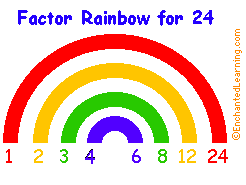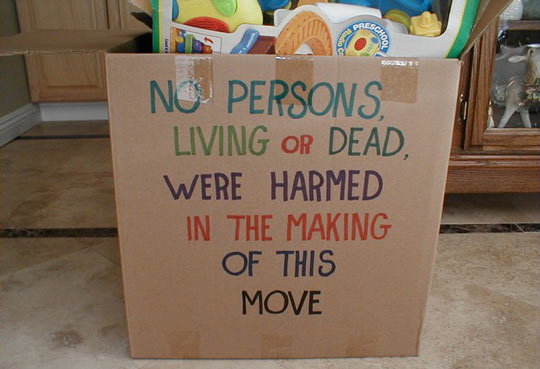We have just about wrapped up our multiplication and division module. However, I did want to post another resource here that matches an anchor chart in our classroom. These are the steps that you can use to check your division.
I hope that this was helpful :)
Monday, November 30, 2015
Wednesday, November 11, 2015
Factor Rainbows
When finding the factors of a number we look for the numbers that can be multiplied together to create that number. We have been using what I call a "Factor Rainbow" to keep our answers organized. You can use skip counting or division to help you find your factors.


Creating a
Factor Rainbow:
1. Start
with the number (24) you are looking for times 1, (e.g. 1 x 24 in above
example) and record the factors and connect with an arch/rainbow.
2. Counting by ones go to the next number (2)
and then skip count by that number to find out if you can arrive at the number
you are looking for (24). If you do, record the two factors and connect with an
arch/rainbow.
3. Counting
by ones go to the next number (3) and repeat the steps.
4. You can
stop checking when there are no more whole numbers between the factor arches.
For example after I check five in the above example I can stop because there
are no whole numbers between 5 and 6 and 6 is already on the rainbow. J
***You can
also use division to help you. Here’s
how, use the standard algorithm. If you
have a remainder then that number is NOT a factor!!!
Division
Back on November 2nd we began dividing using the standard algorithm (AKA long division). Parents you are going to love, because this is the strategy that you are familiar with, however, it may be challenging for the students because unlike the multiplication strategies it is not a conceptual strategy. In the student's math journal we put an entry color coding the steps. I am hopeful that this colorful visual representation will help with the memorization of the steps. Below you will see my entry.
This will take some time for the students. The best advice repeated practice. You can print worksheets with 1-digit divisors and 2-, 3-, or 4-digit dividends for your child to practice. Or you can make it a game by rolling dot cubes (dice) or flipping playing cards to create the problems. Making it a game will be more fun and your child will stay engaged longer :-)
This will take some time for the students. The best advice repeated practice. You can print worksheets with 1-digit divisors and 2-, 3-, or 4-digit dividends for your child to practice. Or you can make it a game by rolling dot cubes (dice) or flipping playing cards to create the problems. Making it a game will be more fun and your child will stay engaged longer :-)
Moving . . .
OK, so I was so excited to begin blogging again . . . and then we sold our house. Which was a HUGE blessing. However, we had lived in the same house for ten and a half years and had accumulated a LOT of stuff!!! So it has been a little crazy trying to pack, teach every day, move, teach every day, unpack, and did I mention still teach every day?!?
Bill, Audrey (the world's greatest dog), and I are getting settled and hopefully I am back (for real this time).
Bill, Audrey (the world's greatest dog), and I are getting settled and hopefully I am back (for real this time).
Sunday, October 25, 2015
I'm Back!
I was on a very long hiatus, but now I'm back! I would like to use this as a place to dig into our new math curriculum. This year my district has adopted a "new" math, Duval Math (a combination of Engage New York and Eureka Math). These are great curricula, however, as with anything new change is often seen as bad.

There are many great aspects of our "new" math. Please join me in embracing the change.
Also, be on the look out for tips to help your child be successful this year!

There are many great aspects of our "new" math. Please join me in embracing the change.
Also, be on the look out for tips to help your child be successful this year!
Subscribe to:
Posts (Atom)


